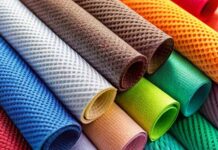The textile and apparel industry is undergoing a transformative shift, driven by changes in consumer behavior, advancements in technology, and global economic trends. In this landscape, small-batch production and shorter lead-times are becoming the dominant paradigms for textile production. These practices, which focus on agility, sustainability, and customization, are gradually replacing the traditional model of mass production. As the textile industry strives to meet the demands of modern consumers and address market challenges, it is becoming clear that small-batch production and shorter lead-times are not merely trends—they represent the future of textile manufacturing.
The Shift in Consumer Behavior
One of the key drivers behind the rise of small-batch production and shorter lead-times is the evolving nature of consumer demand. The modern consumer is far from the passive buyer of the past. Today, they expect faster access to products, greater personalization, and environmentally responsible production. E-commerce platforms and social media have accelerated shopping cycles, with brands needing to respond to trends almost instantaneously. According to research, 67% of consumers now expect brands to introduce new products regularly, and they are less willing to wait weeks or months for new collections.
Traditional mass production, which involves creating large quantities of products months in advance, struggles to adapt to these fast-changing consumer expectations. Small-batch production, with its ability to create limited quantities on demand, offers the flexibility needed to meet these new demands. Additionally, shorter lead-times—achieved through streamlined supply chains and advanced manufacturing techniques—allow brands to quickly bring products to market.
The Benefits of Small-Batch Production
Small-batch production refers to manufacturing products in smaller quantities, as opposed to large-scale production runs. This method has several advantages that align with current market needs:
- Reducing Inventory Risk: One of the biggest challenges of traditional textile production is overproduction, which leads to unsold inventory, markdowns, and waste. Small-batch production minimizes excess inventory, enabling brands to produce only what is needed based on real-time demand.
- Customization and Personalization: Consumers now crave unique products that reflect their individuality. Small-batch production allows for greater customization without the need for large-scale retooling. This is particularly relevant in niche markets like luxury fashion or activewear, where personalization increases perceived value.
- Sustainability: Small-batch production is inherently more sustainable than mass production. By reducing waste and producing only what is required, this approach helps brands minimize their environmental footprint. Additionally, it reduces the energy and resources used in overproduction, contributing to a more sustainable textile ecosystem.
- Faster Innovation: With smaller production runs, brands can experiment with designs, materials, and styles without committing to extensive production runs. This fosters innovation while reducing the risk of failure.
- Engagement with Local Markets: Small-batch production allows for localized manufacturing, where textiles are produced closer to the end consumer. Not only does this reduce transportation costs and emissions, but it also supports local economies and allows brands to adapt to regional preferences.
The Importance of Shorter Lead-Times
Alongside small-batch production, shorter lead-times are becoming crucial in textile manufacturing. The lead time refers to the time it takes for a product to go from the initial design stage to being available for purchase. Traditional production processes often involve lead-times of several months, which are no longer viable in today’s fast-paced market. Shorter lead-times offer several benefits:
- Rapid Response to Trends: In the age of fast fashion, trends can emerge and disappear within weeks. Shorter lead-times allow brands to respond quickly to these trends, ensuring they stay relevant in the eyes of consumers.
- Improved Cash Flow: By reducing the time between production and sales, shorter lead-times enable brands to generate revenue more quickly. This is especially beneficial for small and medium-sized enterprises that cannot afford to tie up capital in unsold inventory.
- Reduction in Forecasting Errors: Long lead-times often force brands to make production decisions based on forecasts, which can be inaccurate. Shorter lead-times reduce reliance on predictions and allow production to be based on actual demand.
- Enhanced Customer Satisfaction: Consumers are increasingly unwilling to wait for products. Shorter lead-times improve the customer experience by ensuring that products are available when they are needed.
Technological Advancements Enabling Change
The shift toward small-batch production and shorter lead-times is being facilitated by advancements in technology. For instance, on-demand manufacturing technologies, such as 3D printing and digital textile printing, allow for the rapid production of customized textiles. Automation and artificial intelligence are also playing a key role in optimizing production processes, reducing waste, and minimizing lead-times.
Supply chain digitization, driven by technologies like blockchain and IoT (Internet of Things), enhances transparency and efficiency. Brands can now track raw materials and finished products in real time, enabling them to respond quickly to changes in demand. Additionally, the use of predictive analytics allows manufacturers to anticipate consumer preferences and adjust production accordingly.
The Role of Sustainability
Sustainability concerns are another major factor driving the adoption of small-batch production and shorter lead-times. The textile industry is under significant scrutiny for its environmental impact, with mass production being a major culprit behind textile waste and pollution. Consumers are increasingly drawn to brands that demonstrate a commitment to environmental responsibility.
Small-batch production, as mentioned earlier, promotes sustainability by reducing waste and overproduction. Shorter lead-times, when combined with sustainable sourcing practices, further help in lowering the environmental footprint of textile manufacturing. The alignment of these practices with sustainability goals makes them highly attractive to brands and consumers alike.
Challenges and the Path Forward
While small-batch production and shorter lead-times offer numerous benefits, they also come with challenges. Small-batch production can be more expensive per unit compared to mass production, which may increase costs for manufacturers and consumers. Additionally, achieving shorter lead-times requires significant investment in technology and supply chain optimization.
However, the long-term benefits far outweigh these challenges. By embracing small-batch production and shorter lead-times, brands can build stronger customer relationships, reduce their environmental impact, and stay ahead in a competitive market. Governments and industry stakeholders should also support this transition by providing incentives for sustainable practices and investing in innovation.
Conclusion
As the textile industry adapts to changing consumer demands, environmental concerns, and advancements in technology, small-batch production and shorter lead-times are emerging as essential strategies for success. These practices enable brands to be more agile, sustainable, and customer-focused, marking a departure from the inefficiencies of traditional mass production.
For the future of textile manufacturing, small-batch production and shorter lead-times are not just innovations—they are necessities. Brands that embrace this new paradigm will not only thrive in an increasingly demanding market but also contribute to a more sustainable and responsive textile ecosystem.






























